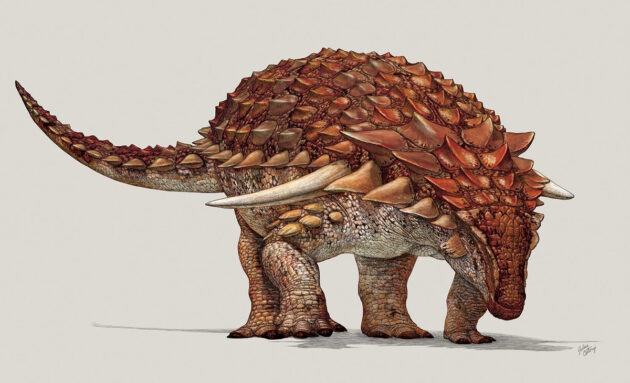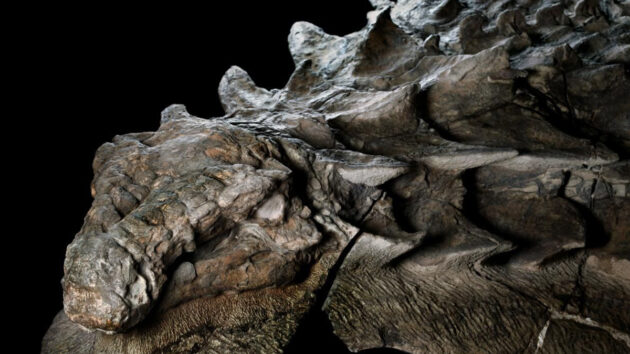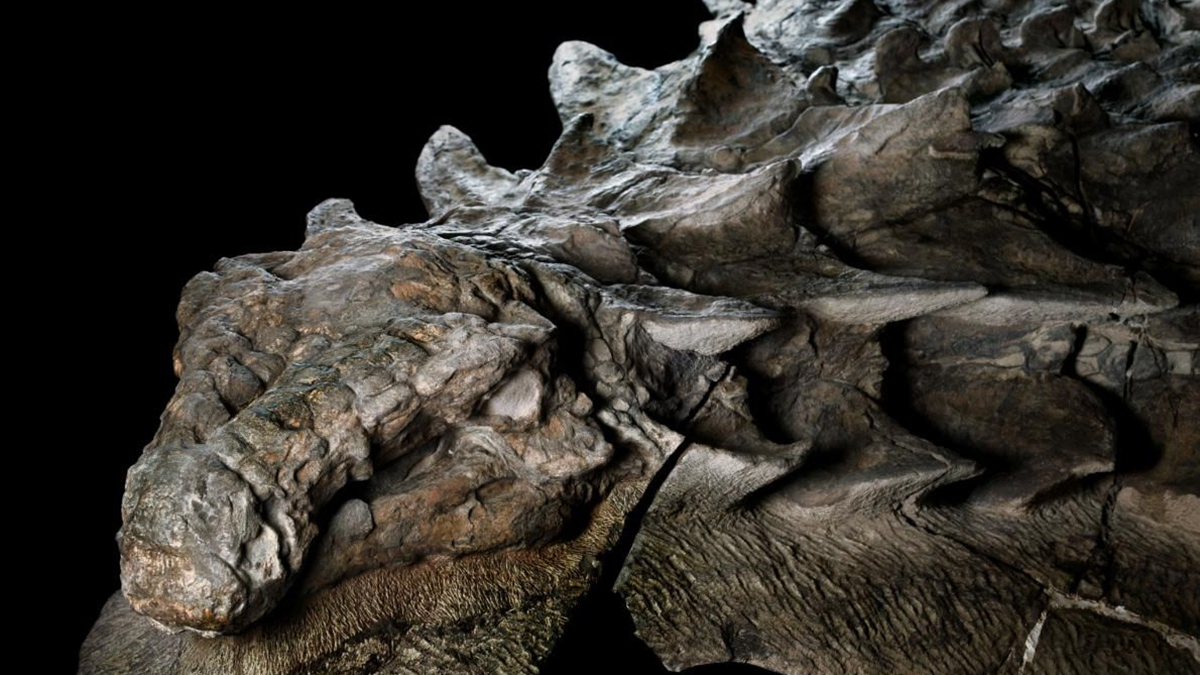Think of the word “fossil” and you will almost certainly picture bones. That’s because fossilisation is an incredibly rare and unusual process that prefers the hardest parts of organisms: bones, teeth, shells, woody trunks. Fossils of organisms lacking bones or shells, or the soft body parts of those that do have them, are consequently vanishingly rare.
A recently unveiled fossil at the Royal Tyrrell Museum of Paleontology in Alberta, Canada, is perhaps the most remarkable dinosaur fossil ever found. The fossil nodosaur – a newly-discovered Cretaceous species of armoured herbivores – is so well preserved that scientists are calling it a “dinosaur mummy”.
With the creature’s skin, armor, and even some of its guts intact, researchers are astounded at its nearly unprecedented level of preservation.
“We don’t just have a skeleton,” Caleb Brown, a researcher at the Royal Tyrrell Museum, told National Geographic. “We have a dinosaur as it would have been.”
When this dinosaur — a member of a newly discovered species called nodosaur — was alive, it was an enormous four-legged herbivore protected by a spiky, plated armor and weighed in at approximately 3,000 pounds.
Today, the mummified nodosaur is so intact that it still weighs 2,500 pounds.
Fossilisation requires a truly serendipitous sequence of events. The organism needs to be buried quickly – before it rots or is eaten – and in an environment that favours fossilisation: in a muddy lake bed, for instance, or at the bottom of a sea.
Researchers suggest that the nodosaur may have been swept away by a flooded river and carried out to sea, where it eventually sank to the ocean floor.
As millions of years passed, minerals may have eventually taken the place of the dinosaur’s armor and skin. This might help explain why the creature was preserved in such a lifelike form.
How “lifelike” are we talking? According to Science Alert, the preservation was so good that researchers were able to find out the dinosaur’s skin color.
By using mass spectrometry techniques, researchers detected pigments on the scales of the dinosaur. Apparently, the nodosaur’s coloring was a dark reddish brown on the top of the body — and lighter on the underside.

The need for camouflage for even a living tank tells us a lot about the dangerous environment it lived in.
Scientists think the coloring was an early form of countershading — a camouflage technique that uses two tones to protect an animal from predators. Considering this dinosaur was an herbivore, its skin color likely played a role in protecting it from the enormous carnivores of the time.
“Strong predation on a massive, heavily-armored dinosaur illustrates just how dangerous the dinosaur predators of the Cretaceous must have been,” said Brown.
Even after an organism is fossilised, subsequent geological history will affect the fossil. Fossils can be broken, squashed and distorted in other ways by geological movement. The nodosaur “mummy” is remarkable in even that respect.
As if the preservation of skin, armor, and guts weren’t impressive enough, the dinosaur mummy is also unique in that it was preserved in three dimensions — meaning that the original shape of the animal was retained[…]
it has taken researchers 7,000 hours over the course of six years to test the remains and prepare them for display at the Royal Tyrrell Museum. Now, visitors finally have the chance to gaze upon the closest thing to a real-life dinosaur that the world has likely ever seen.
All That’s Interesting

Please share this article so that others can discover The BFD

